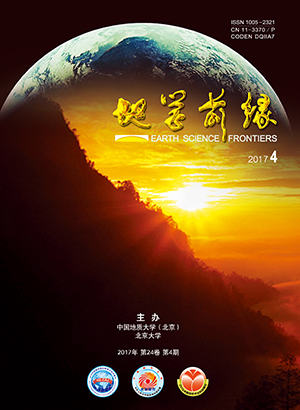|
|
Lithospheric extension of the post-collision stage of the Paleo-Tethys oceanic system in the East Kunlun Orogenic Belt: insights from Late Triassic plutons
CHEN Guochao,PEI Xianzhi,LI Ruibao,LI Zuochen,PEI Lei,LIU Chengjun,CHEN Youxin,WANG Meng,GAO Feng,LI Xiaobing
2019, 26(4):
191-208.
DOI: 10.13745/j.esf.sf.2019.1.18
We studied in detail the rock assembly, distribution and petrogenesis of Late Triassic plutons in the East Kunlun Orogenic Belt (EKOB) by performing a comprehensive analysis of rock types, intrusion ages, petrogeochemistry and isotopic geochemistry characteristics of the plutons. The Late Triassic is a tectonically pivotal transitional period during the evolution of the Paleo-Tethys oceanic system in EKOB when various magmatic rocks, including gabbro, granodiorite, monzonite and syenite, crystallized extensively while adakitic magmatic rock and A-type granite were extensively exposed. Compared to plutons intruded during subduction stage, the Late Triassic plutons possess smaller scale outcrop, such as small intrusions, stocks and dykes intruding into earlier magmatite and strata. Geochemically, the plutons mainly belong to metaluminous to weakly peraluminous high-K to shoshonite series. They are enriched in light rare earth elements (LREE) and large-ion lithophile elements (LILE), Rb, Th, Ba and Cs, and depleted in heavy rare earth elements (HREE) and high field strength elements (HFSE), Nb, Ta and Ti, with varying degrees of differentiation, enrichment and depletion from rock to rock. Most of the plutons have similar isotopic characteristics to that of Late PermianTriassic mafic magmatic rocks; furthermore, some rocks have higher εNd(t) and εHf(t) values. Mafic magmatite, ordinary granite and adakitic magmatite are ubiquitous in EKOB. However, A-type granites are mainly developed in the Qimantagh tectonic zone, near the Ayakekumulake-Xiangride fault. The mafic plutons are most likely derived from partial melting of metasomatic mantle wedge with subduction fluid based on their arc magmatite features. Most of the ordinary granites and adakitic magmatites are partial-melting products of juvenile lower crust, except for some mantle-derived adakitic magmatites with mantle magma mixing, as well as some A-type granites from relict of partial-melting of lower crust. All studies indicate that EKOB stepped into the post-collision stage of the Paleo-Tethys oceanic system in the Late Triassic period. Crust thickening and density increasing, triggered by continuous collision between the Bayanhar block and EKOB, led to lithospheric delamination due to gravitational instability, which resulted in lithospheric mantle decompressional melting to yield much of mafic magma. Mafic magma later on intruded into different crust melts and partial-melts of delaminated crust to form metasomatic mantle magma, which, through magmatic mixing and later stage evolution, produced the rich and diverse plutons of the Late Triassic in EKOB.
References |
Related Articles |
Metrics
|

